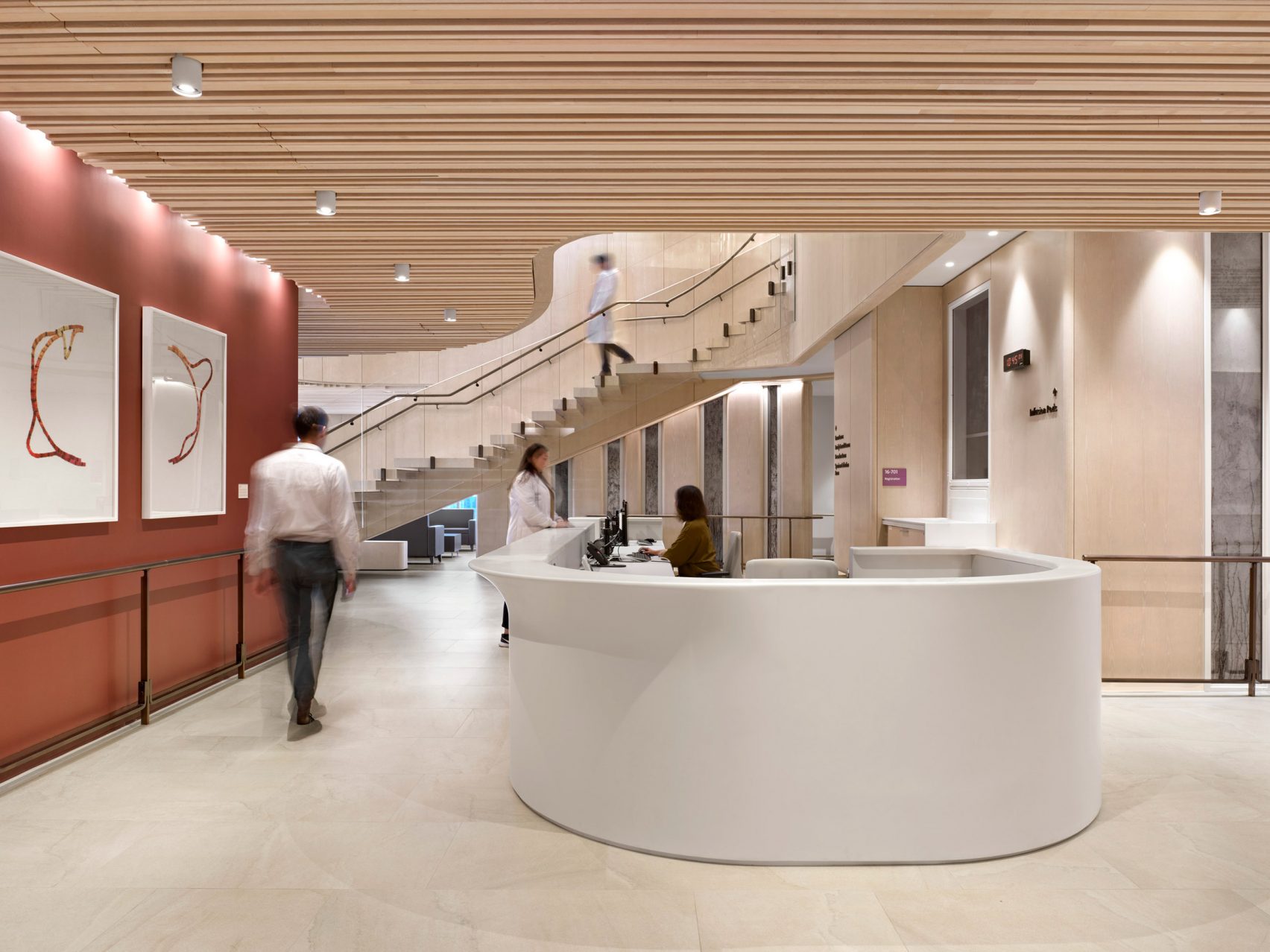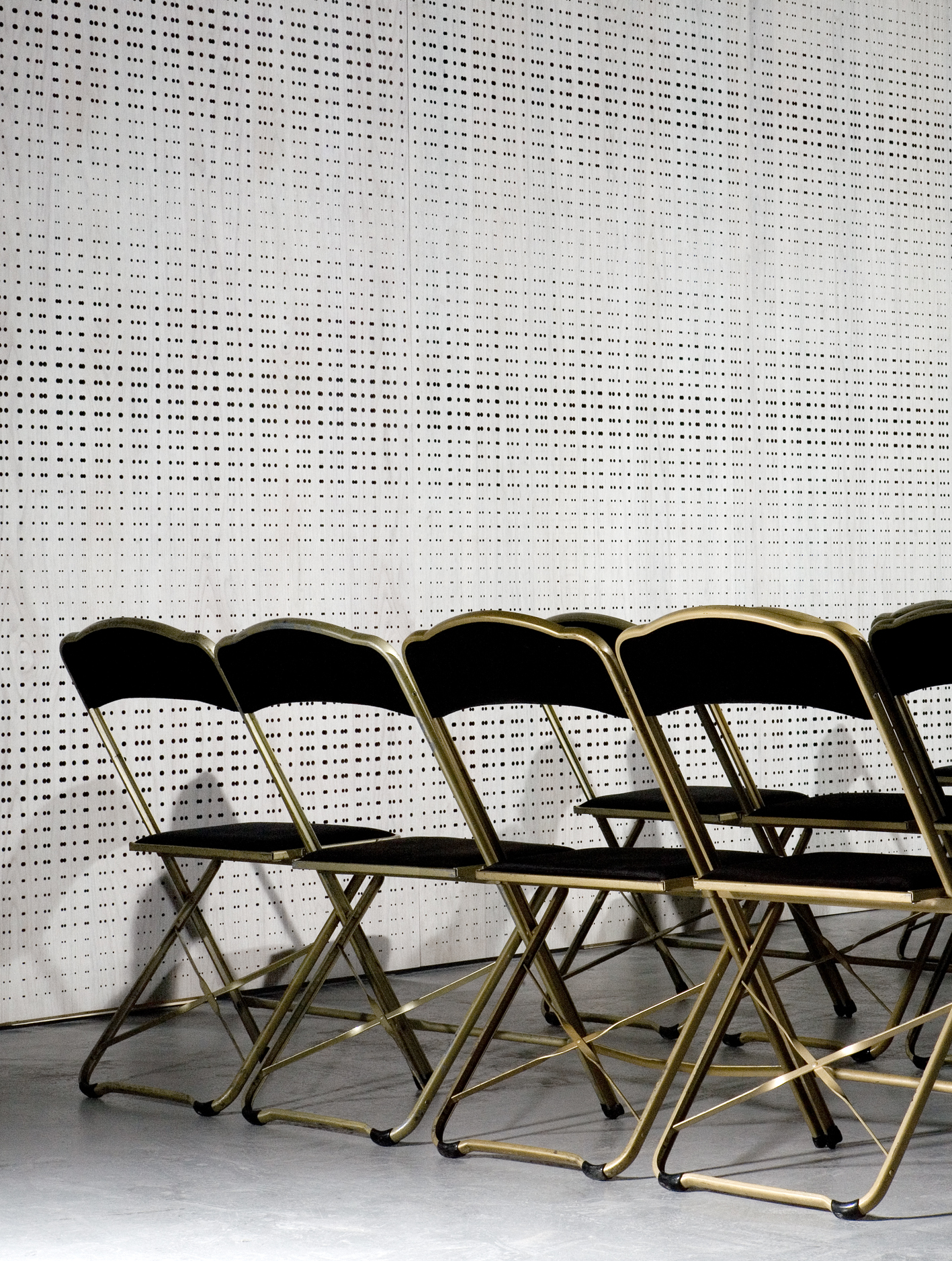The Effects of Noise on Health & Wellness
In the bustle of our daily lives, the architecture around us plays a critical role, shaping not only our visual landscape but our auditory one.
We exist within a constant influx of sounds that we can never turn off, where the acoustical quality of our environments directly affects our well-being.
This dynamic is an architectural imperative, often overlooked and overshadowed by visual aesthetics, but designers need to understand the effects of noise in environments and the benefits of safe noise levels.

Where the Stakes are High: Silence in Healthcare
Nowhere else demonstrates the power of acoustic design more than spaces designed to heal. The reduction of excess noise, coupled with the deliberate use of sound-absorbing materials, can significantly enhance patient recovery.
An article on the AAMC website titled “Hospitals are noisy. They don’t have to be” sums it up nicely, illustrating the critical link between reduced noise levels and improved patient outcomes.
This underscores the pivotal role architects and designers play in creating environments that support environmental health noise reduction and embody the principles of healthy decibel levels.

Acoustic Alchemy in the Workplace
Though most of us avoid hospitals, we can’t help but spend most of our days at work, making that the next most important arena to study the effects of noise on our wellbeing.
Here, an invisible disruptor of the workplace, noise, erodes concentration and hampers productivity.
The Finnish Institute of Occupational Health has demonstrated that strategic acoustic design can mitigate these effects of noise in the workplace, enhancing worker satisfaction and health.
By integrating sound-absorbing materials and considering workplace noise levels, architects can transform chaotic soundscapes into sanctuaries of productivity & innovation.

The Academic Resonance: Sound Design in Education
In educational settings, acoustic design for schools plays a crucial role in enhancing learning outcomes.
The auditory environment, as noted in “Does noise affect learning? A short review on noise effects on cognitive performance in children,” published in Frontiers in Psychology, significantly impacts student performance.
Employing materials that foster clarity and minimize distractions, such as perforated wood panels and acoustic felt, can transform classrooms into optimal learning environments.
Urban Soundscapes: Composing the City’s Aural Health
Urban areas are notorious for their relentless noise from traffic, construction, and bustling crowds.
However, amidst this cacophony, architects and urban planners have found ways to carve out serene enclaves. These tranquil spaces, often nestled within parks or pedestrian zones, are not accidents but the result of deliberate design choices focused on sound management.
By utilizing environmental noise mapping, professionals can strategically design these areas to shield them from urban noise, incorporating elements like water features and dense greenery that naturally absorb sound. Techniques such as installing noise barriers and selecting materials for quiet pavements are practical solutions that significantly reduce noise pollution.

This approach to urban design offers a tangible lesson for architects: the integration of acoustic considerations into the planning phase can transform the way we experience city life.
Moreover, engaging with the community to understand their needs can guide the creation of spaces that not only reduce noise but also enhance social interaction and well-being.
By prioritizing acoustic health, architects can contribute to cities that not only look good but sound good too, making peaceful urban living a reality.
Echoes of Nature: Bringing Biophilic Soundscapes Indoors
In the din of city noise, there’s a calm spot waiting for us, thanks to biophilic design. This design philosophy brings the peace of nature inside, to create spaces where we can breathe easy.
Picture a room filled with sunlight and plant shadows, where the soft chirping of forest life plays in the background. Research, like this study on natural sounds, tells us that these natural sounds can actually make us less stressed, wrapping us in a calm that makes you want to sigh with relief.
Biophilic design goes further, using materials like wood and moss that not only look good but also absorb sound, making rooms quieter and more peaceful. Adding a small waterfall or bamboo chimes can boost our focus and happiness, inspired by findings from Rensselaer Polytechnic.
Through this philosophy, we aim to create places that are not just about looking good but feeling good too.

Conclusion: Serenity as a Design Philosophy
Incorporating acoustics into the foundation of our designs is not merely an aesthetic choice but a health imperative.
As we endeavor to create spaces that promote health, productivity, and learning, let’s champion acoustics as a central tenet of architectural design.
Our vision at Habitat Matter is to bring better-designed sound environments to all interiors with this silent revolution, advocating for spaces that sound as good as they look, where the quiet is not just present but a deliberate, healthful choice.




